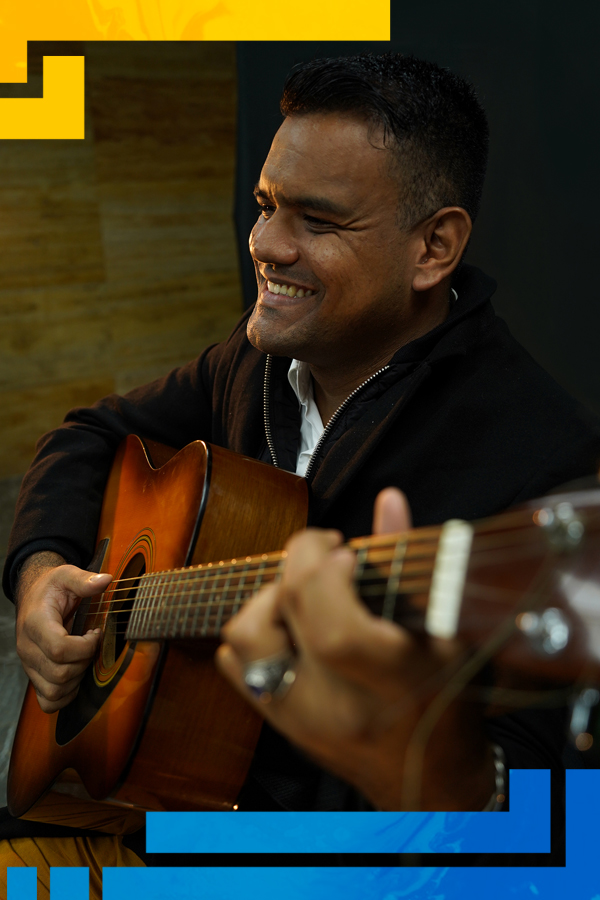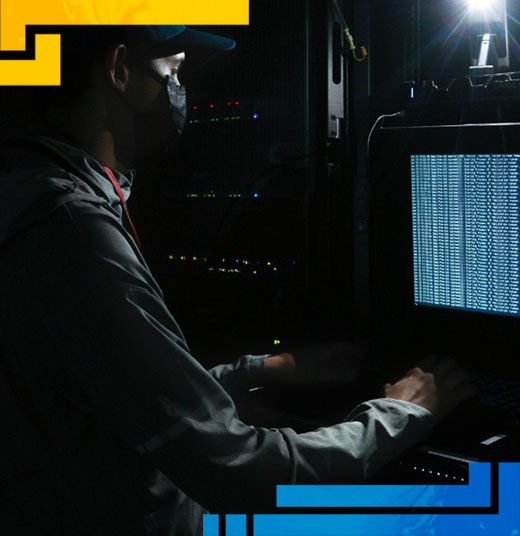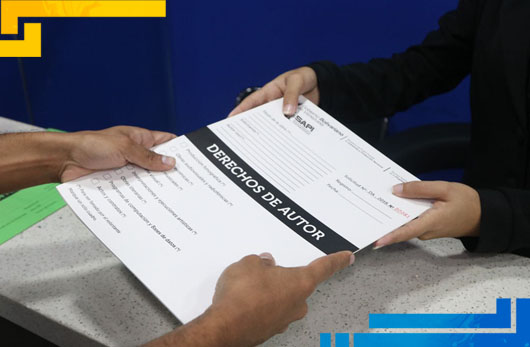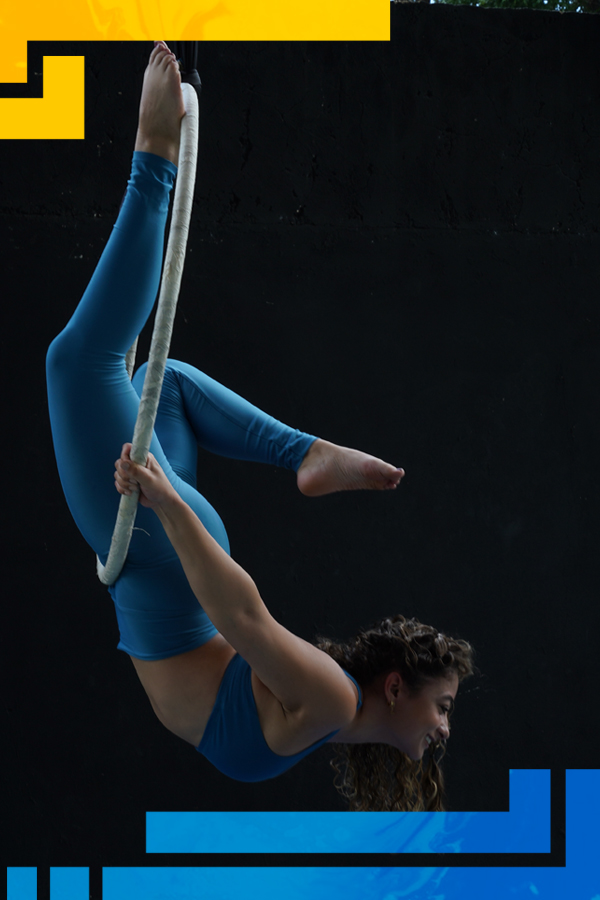Copyright

NATIONAL DIRECTORATE OF COPYRIGHT
Safeguards the moral and patrimonial rights of authors, guaranteeing the recognition of their moral and patrimonial rights, nationally and internationally, contributing to promote the development, projection and consolidation of a culture of respect for Copyright and Related Rights.
FUNDAMENTAL GOALS
- To promote and encourage the registration and protection of creative works of genius, products and productions of a literary, artistic or scientific nature, and the cultural expressions of the people.To promote and encourage the registration and protection of creative works, products and productions of a literary, artistic or scientific nature, and cultural expressions of the people.
- To authorize, supervise, inspect, suspend and/or cancel the operation of the Collective Management Entities.
- Act as mediator or arbitrator, guaranteeing access to specialized justice and alternative means of conflict resolution.
COPYRIGHT
It is a set of legal rules and principles that affirm the moral and patrimonial rights that the law grants to authors, by the simple fact of the creation of a literary, artistic, musical, scientific or didactic work, whether published or unpublished.
SUBJECTS OF PROTECTION
It protects the author, co-author and producers (Natural Persons) on their literary, artistic or scientific creations, which are described, explained, illustrated or incorporated to the works.
ARE NOT SUBJECT OF PROTECTION
Legal Persons
OBJECTS OF REGISTRATION
- Literary Works: presented in written form, not in graphic or physical form.
- Musical works: written musical compositions, sound or music sheets.
- Audiovisual Works: creation expressed by associated images, with or without incorporated sound, intended for projection or sound.
- Radiophonic Works: produced for radio or television broadcasting.
- Visual Works of Art: drawings, paintings, architectures, engravings, lithographs, illustrations, geographical charts, plans, plastic works, geography, topography, architecture sketches
- Scenic or Dramatic Works: works whose movements on stage are described by any means, dramatic or dramatic-musical origin, choreographies, pantomimes or theatrical works.
- Computer Program and Database: is the expression of the language, notation or code, of a set of instructions that a computer, technological equipment and/or application, executes a task or function.
- Phonographic Productions: is the fixation of sound and artistic productions, for their reproduction and communication to the public, in discographic formats.
- Acts and Contracts: entered into between authors and agents acting in the creative industry, which allow for the disposal and exploitation of the economic rights of a work.
- Performances and Artistic Executions: any artistic activity based on a role, such as: singing, reading, reciting or interpreting a literary, artistic, dramatic, drama- musical or choreographic work for public performance.
They aren’t object of Registration
- The texts of laws, public treaties, official regulations, decrees, official decisions and other official acts, as they are in the public domain according to article 4 of the Law on Copyright.
- Games and game mechanics.
- Mathematical procedures.
- Manuals and curriculum.
- The ideas themselves, the ideological or technical content.
Copyright duration
In accordance with the provisions of Article 25 of the Copyright Law, it lasts for the life of the copyright and expires sixty (60) years from January 1 of the year following his death, even with respect to Undisclosed works during his lifetime.
Copyright
- Morals: They belong to the natural person; they are considered by beingm inalienable and cannot be transferred. They recognize the personal relationship between the author and the work. They protect reputation and identity, and have no-time-limit.


- Patrimonial: are those whose purpose is the economic benefit for the author through the exploitation of the work, either personally or by transferring them. The use of the protected work by a third party requires the express authorization of the author or holder of his rights, and prevents third parties from using it without or against his will or authorization.
These are:
- Of Reproduction: power of the holder to produce or authorize the production of copies or copies of the protected work.
- Adaptation or transformation: the right to authorize the transformation, adaptation, translation, musical arrangement, as a result of a derivative work.
- Of Publication: right to authorize the disclosure of the work, in the production of copies to be offered to the public.
- Of Distribution: the right to authorize the first delivery to the public of the copies of a Work through its sale and commercialization.
- Of Communication, Interpretation and Public Performance: it recognizes the exclusive power to authorize or prohibit any public communication of the work; any act through which the work is made known to the public without the delivery of copies.
- Related: they are closely related to Copyright, they are developed and produced through the original work, protecting the legal interests of the persons who contribute to perform the works available to the public.
Its beneficiaries are:
- Artists, performers (such as actors and musicians) with respect to their performances.
- Broadcasting organizations in respect of their radio and television programs.
- Producers of phonograms with respect to their recordings.


COLLECTIVE MANAGEMENT ENTITIES
Non-profit civil associations, authorized, supervised and inspected by the State for their operation by the National Directorate of Copyright, responsible for managing the economic rights of the authors belonging to the same guild, representing their commercial interests, and to administer their rights, collecting royalties for the public performances of the works included in their repertoire, distributing the income received among their associates, granting licenses and controlling compliance with the contracts they manage.
There are 3 authorized Collective Management Entities:
- Sociedad de Autores y Compositores de Venezuela (SACVEN).
- Venezuelan Association of Performers and Phonogram Producers (AVINPRO).
- Autorarte (Collective Management Entity for visual artists).
STEP BY STEP COPYRIGHT REGISTRATION
- Register in the Webpi System through our portal sapi.gob.ve
- Use the calculator of our system to know the amount to pay per application, which
includes:- Copyright Folder.
- Application form.
- SAPI service fee.
- Tax stamp expressed in Petros (automatically converted into Bolivars by the system).
- Make the payment in the authorized banks to access the delivery of the form.
- Complete the information requested in the form, avoiding errors, erasures and/or corrections.
- Submit the application, attaching the necessary requirements, at our One-Stop Comprehensive Service Desk.
Once the analysis of the application is completed, you will be notified via e-mail or instant messaging, to inform about the payment of the established fee, and issue the Certificate of Registration. After the payment of the fee, you will be notified via e-mail or instant messaging for the delivery of the Certificate of Registration that accredits you as the author of the work.


REQUIREMENTS FOR THE REGISTRATION OF WORKS
Literary Work
- Proof of payment.
- One (1) set of forms printed on legal size sheets.
- Identity card of the author or authors.
- Current RIF of the author or authors.
- Two (02) copies of the work on CD, PDF format.
Musical Work (maximum 25 songs per request)
- Proof of payment.
- A set of forms printed on legal size sheets.
- Photocopy of the identity card of the author or authors.
- RIF of the current author or authors.
- Two copies of the work on CD (audio files in MP3 format and if they are scores in PDF format).
Phonographic Production
- Photocopy of the identity card of the author or authors.
- RIF of the current author or authors.
- Two copies of the work where the producers who fix the works, interpreters, arrangers and authors of the songs are identified.
Audiovisual Work
- Identity card of the author or authors (Director of Production, Director of Plot or Adaptation, Director of Script or Dialogues and Director of Music, specially composed).
- Current RIF of the author or authors.
- Two copies of the work in video format.
- In the event that the registration is granted to a natural person who does not assign their rights, the production must not contain advertising or watermarks of the production company.
Visual Art Work
- Proof of payment.
- A set of forms printed on legal size sheets.
- Photocopy of the identity card of the author or authors.
- RIF of the current author or authors.
- Two copies of the work on CD, with the number of photographs necessary to identify the work and the description of the elaboration (material, technique and dimensions of the same).
Computer Programs and Database
- Proof of payment.
- A set of forms printed on legal size sheets.
- Photocopy of the identity card of the author or authors.
- RIF of the current author or authors.
- Two copies of the work on CD (must contain the first two and last two pages of the source code, a user manual and a procedure manual, with the necessary screenshots for identification).
Acts and Contracts
- Proof of payment.
- A game of spreadsheets.
- Photocopy of the identity card of the author or authors.
- RIF of the current author or authors.
- Assignment or use license contract: original and copy.
Additional requirements in case of being a Legal Entity
- Constitutive Act.
- Company RIF.
- Minutes of last meeting (if necessary).
- Notarized Power of Attorney (in case of delegating a third party to carry out the procedures corresponding to the request).
- Contracts or Use Licenses by the authors (if necessary).

General
- Presentation of proof of the transfer or deposit made to the aforementioned banks.
- The application form for registration of a musical or literary work (1 set of the same must be submitted, printed on 8.5×13 cm. legal size sheets, legal size configuration).
- Photocopy of the identity card of the author(s) (untrimmed, on letter size paper) in force and legible.
- Current Tax Information Registry (RIF) of the author(s).
- Copy of the work duly identified with the author’s data and the title of the work. Number of copies to be deposited: one (1) if it is an unpublished work and two (2) if it is a published work.
- Format of the copy: It may be submitted in printed paper format or in digital CD format.
The formats of the digital files are the following:
- Images: PNG or JPG.
- Documents: PDF.
- Audio: MP3 Data or waw.
- Videos: Quicktime (MOV), MPEG-1, MPEG-2, MPEG-3, AVI or WMV.
Formality of the copies: The copies must be submitted identified with the author's name, identity card and name of the work, which must be the same as that stated in the application form.
If the author is deceased: the application may be made by his universal heirs, duly authorized to do so by means of the Solvency of Succession issued by the SENIAT.
Legal Entity
- Articles of Incorporation, last Assembly Minutes or Publications, copy of the Tax Information Registry (RIF) of the legal entity.
- If the applicant makes the request on behalf of the Author, he/she must submit the power of attorney, duly notarized, and a copy of the Identity Card of the attorney-in-fact.
Special Requirements according to the genre or nature of the work
- If the work is a derivative work, express authorization from the author of the original work must be submitted (except for works in the public domain).
- For musical works with or without lyrics, you may submit: copy of the sheet music or the means of expression, transcribed lyrics in a manila folder letter size with its respective hook and identification or digital format CD duly identified, which may include the lyrics of the songs in a PDF file identified with its title and/or music previously recorded in MP3 DATA format and identified with its title.
- In audiovisual, radio or dramatic works, physical support containing the fixation of moving images must be included on CD or DVD.
- In works of visual art, the photographs necessary for their identification.
- In works of architecture or engineering: plans that allow the identification of their essential elements.
- In computer programs, one (1) CD containing a manual of the sequence of instructions, the first two and last two pages of the source code and one (1) procedure manual of the same.
- For phonographic productions, a reproduction of the phonogram.
- Use of the image: in the case of a photograph, bring authorization from the person whose image is to be used or from the person whose rights it represents.
- In the event that the author is unable to carry out the procedure himself before this institution, a notarized power of attorney and a photocopy of the proxy’s identity card must be submitted.
- If there is any assignment of rights, which is not based on article 59 of the Copyright Law, the notarized contract must be submitted.
In the event that the registration is made by a legal entity, the following must be included:
- Copy of the Commercial Registry.
- Copy of the Articles of Incorporation.
- Copy of the last assembly held in such company.
- Copy of the updated Tax Information Registry (RIF).
What is subject of registration?
Any work of the invention of creative character, independently of its form of expression, merit or destiny.
What is NOT subject of registration?
- Ideas in themselves without technical, ideological development of scientific works.
- Mathematical procedures.
- Official Acts.
- Patriotic Symbols.
- Games (any field).
- Texts of laws (Decrees, Official Regulations).
May be subject to registration if…
- Games (The elements that make up the game, such as the visual art of the game, are registered).
- Web Pages (The elements that make up the page, whether content, musical, literary, art or visual design, among others, are registered).
- Can the application for Copyright Registration only be made in Caracas?
Yes, only in the city of Caracas you can apply for a copyright registration, specifically at the Copyright Registration Office located in the Simon Bolivar Center, North Building, 5th Floor, El Silencio, next to Plaza Caracas.
- Can the application form be downloaded from the SAPI web page?
Yes, you can make the purchase of the combo through a transfer or deposit corresponding to musical and literary works, which includes the forms in digital form to be filled out through the WEBPI- SERVICIOS EN LINEA system; the same must be deposited in physical form in our integral ticket office located in the Simón Bolívar Center, North Building, 5th Floor, El Silencio, next to Plaza Caracas.
- What are the banks and SAPI bank account numbers where payments for services can be made?
You can make a transfer or deposit to any of the following accounts, as long as they are made from the same platform:
- Banco del Tesoro: 0163-0204-08-2043000-385
- Banco de Venezuela: 0102-0552-210000025-713
Or you can pay by debit card at the Customer Service Desk (CASH OR CREDIT CARDS ARE NOT ACCEPTED).
- Is it possible to make a single deposit with the amounts corresponding to the application form and the filing fee?
Yes, See prices in Petro (Includes: Folder, Application Form, Filing Fee, Tax Stamps and Web Services)
- Where and at what time can I file an application for Copyright Registration?
Applications for Copyright Registration must be submitted with all the necessary documents at the Integral Attention Desk on the 5th floor from Monday to Friday from 8:30am to 3:30pm.
- How do I get a response to my application?
Once the Copyright Registration application has been submitted by the Integral Attention Box Office, you may call the offices or send an e-mail to the following address: derechodeautor@sapi.gob.ve.
Likewise, the applicant will be notified by telephone or mail if the work is approved or returned for any corrections that may be required.
- What should I do if the application for Copyright Registration is approved?
You must pay for the Registration Right and the Certificate of Registration, the amount must be deposited in any of the SAPI bank accounts through a transfer or deposit from the same platform, the deposit or transfer form must be deposited at the Box Office.
You may also make the payment by debit card at the integral box office located on the 5th floor.
- Once the registration fee has been paid, how do I obtain the Certificate of Registration?
The Certificate of Registration will be delivered at the Copyright Office from 8:30 am to 12:00 noon and from 1:00 pm to 3:30 pm with prior notification via telephone or e-mail.
- Is it necessary to obtain the ISBN before registering the Copyright?
No, these are different systems which are not mutually exclusive.
- Do you receive applications by courier?
Yes, only by certified mail (IPOSTEL) and with all the corresponding documentation and requirements.
If you do not comply with all the requirements and any of them are missing, your application will not be accepted.


